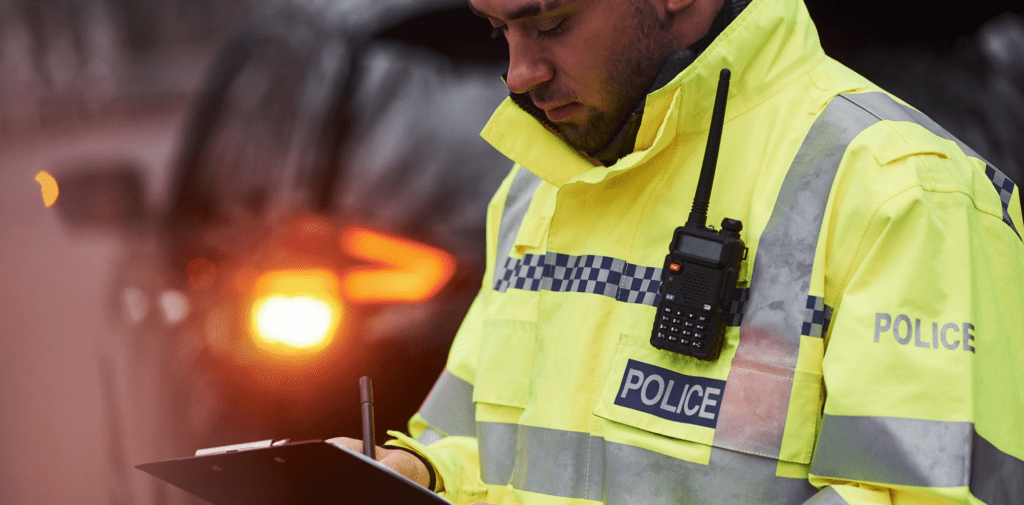
Understanding Road Rage
Definition of Road Rage
Road rage is a term used to describe aggressive or violent behaviour exhibited by a driver in response to stress or frustration while driving.
It can include a wide range of actions such as shouting, making rude gestures, deliberately driving in an unsafe manner, or even physical confrontation.
Road rage is not just an emotional reaction but can escalate into dangerous situations that jeopardise the safety of everyone on the road.
Understanding what road rage entails is the first step in learning how to manage and prevent it.
Common Triggers of Road Rage
There are several common triggers of road rage that can set off aggressive driving behaviour. These include:
- Heavy traffic
- Being cut off by another vehicle
- Slow drivers
- Tailgating
- Perceived slights or disrespect from other drivers
Additionally, personal stressors such as:
- Running late
- Personal issues
- Having a bad day can exacerbate feelings of frustration and lead to road rage.
Understanding these triggers can help drivers recognise and avoid situations that may provoke aggressive responses.
The Impact of Road Rage on Driving Safety
The impact of road rage on driving safety is significant and concerning. Aggressive driving behaviours can lead to accidents, injuries, and even fatalities.
Road rage not only endangers the driver experiencing it but also puts other road users at risk.
When a driver acts out of anger, they are more likely to make poor decisions, such as:
- Speeding
- Tailgating
- Weaving through traffic, which increases the likelihood of collisions
Moreover, road rage incidents can escalate into physical confrontations, further compromising safety on the road.
Recognising Your Own Road Rage
Signs You Are Experiencing Road Rage
Recognising the signs you are experiencing road rage is crucial for taking steps to control it.
Common indicators include:
- Feeling irritated or angry while driving
- Becoming impatient with slower drivers
- Experiencing an overwhelming urge to retaliate against perceived wrongs
You may notice an increase in aggressive driving behaviours, such as:
- Speeding
- Tailgating
- Using your horn excessively
Being aware of these signs is the first step towards managing road rage effectively.
Emotional and Physical Symptoms
The emotional and physical symptoms of road rage can vary but often include a racing heart, clenched fists, tense muscles, and shallow breathing.

Emotionally, you might feel:
- Intense anger
- Frustration
- or even a sense of injustice
These symptoms can escalate quickly, leading to rash and dangerous driving decisions.
Recognising these symptoms early can help you take steps to calm down and prevent an aggressive outburst.
Self-Assessment Techniques
Several self-assessment techniques can help you determine if you are prone to road rage and how to manage it.
One effective method is to keep a journal of your driving experiences, noting instances where you felt angry or frustrated and what triggered those feelings.
Reflect on how you reacted and what the outcomes were. This can help you identify patterns and develop strategies to cope with road rage.
Additionally, consider asking friends or family for feedback on your driving behaviour, as they can offer an outside perspective on your actions and reactions.
Techniques to Prevent Road Rage
Planning Your Journey
Planning your journey is an essential technique to prevent road rage. Before setting out, take time to map out your route, considering alternative paths to avoid potential traffic jams or construction zones.
Using navigation apps can help you stay informed about real-time traffic conditions and suggest the best routes.

By having a clear plan and being prepared for any detours, you reduce the stress associated with unexpected delays and can maintain a calmer mindset throughout your drive.
Allowing Extra Time
Allowing extra time for your journey can significantly reduce the likelihood of experiencing road rage. Rushing to reach your destination can heighten stress and frustration, especially when encountering traffic or other delays.
By giving yourself a buffer of extra time, you can handle unforeseen circumstances more calmly.
This approach not only helps you stay relaxed but also ensures you arrive safely without the pressure of tight schedules.
Practicing Relaxation Techniques Before Driving
Practicing relaxation techniques before driving can set a positive tone for your journey and prevent road rage.
Techniques such as deep breathing, progressive muscle relaxation, or even a few minutes of meditation can help calm your mind and body.
Engaging in these practices before you get behind the wheel can help you start your drive with a clear head, reducing the chances of becoming agitated by minor irritations on the road.
Managing Road Rage in the Moment
Breathing Exercises
Breathing exercises are a powerful tool for managing road rage in the moment. When you feel anger or frustration rising, take a series of deep breaths.
Inhale slowly through your nose, hold the breath for a few seconds, and then exhale slowly through your mouth.

This process helps to lower your heart rate and calm your mind, allowing you to regain control of your emotions and respond more calmly to the situation.
Counting to Ten
Counting to ten is a simple yet effective technique to manage immediate feelings of anger or frustration while driving.
When you feel the onset of road rage, take a moment to count slowly to ten. This brief pause gives you time to cool down and think more clearly.
It creates a mental break from the situation, preventing impulsive reactions and allowing you to handle the circumstance more rationally.
Using Positive Self-Talk
Using positive self-talk can help you manage road rage by altering your internal dialogue. When you find yourself becoming angry, consciously replace negative thoughts with positive or neutral ones.
Remind yourself that the traffic will eventually clear, that the delay is temporary, and that maintaining calm is crucial for your safety and that of others.
By focusing on positive affirmations, you can shift your mindset and reduce the emotional intensity of the situation.
Incorporating these techniques into your driving routine can help you manage stress and prevent road rage.
Whether you are:
- Planning your journey
- Allowing extra time
- Practising relaxation techniques
- Using breathing exercises
- Counting to ten
- Engaging in positive self-talk
each method contributes to a safer and more pleasant driving experience.
Understanding and applying these strategies can significantly enhance your ability to remain calm and in control on the road, fostering a safer environment for all road users.
Dealing with Other Drivers’ Aggressive Behaviour
Staying Calm and Not Retaliating
Staying calm and not retaliating is crucial when faced with other drivers’ aggressive behaviour.
Reacting with anger or aggression can escalate the situation and lead to dangerous consequences.
Instead, focus on maintaining a composed demeanour. Take deep breaths and remind yourself that your primary goal is to stay safe.
Retaliation can make things worse, not only for you but for other road users as well.
By keeping your emotions in check, you can navigate away from potential conflicts and reduce the risk of accidents.
Avoiding Eye Contact
Avoiding eye contact with aggressive drivers can help de-escalate tense situations. Eye contact can be perceived as a challenge or confrontation, potentially provoking further aggressive behaviour.

By keeping your gaze fixed on the road and your surroundings, you signal that you are not engaging in their aggressive tactics.
This strategy helps to defuse the situation and allows you to focus on driving safely.
Knowing When to Report Aggressive Driving
Knowing when to report aggressive driving is essential for maintaining safety on the roads. If another driver’s behaviour is threatening or dangerous, it’s important to report the incident to the authorities.
Make note of the vehicle’s make, model, colour, and registration number, and provide as much detail as possible about the behaviour you observed.
Reporting aggressive driving can help law enforcement address the issue and prevent future incidents, contributing to safer roads for everyone.
Long-Term Strategies for Reducing Road Rage
Regular Exercise and Healthy Living
Incorporating regular exercise and healthy living into your routine can significantly reduce road rage over the long term.
Physical activity helps to manage stress levels and improve overall mood, making you less likely to react aggressively while driving.

A balanced diet and adequate sleep also contribute to better emotional regulation.
By taking care of your physical health, you enhance your ability to handle stressful situations calmly and effectively.
Seeking Professional Help if Needed
Seeking professional help if needed is a crucial step for those who struggle with severe road rage. Therapy or counselling can provide valuable tools and strategies for managing anger and frustration.
A professional can help you understand the underlying causes of your road rage and work with you to develop healthier coping mechanisms.
Don’t hesitate to seek help if you find that road rage is affecting your driving and overall well-being.
Joining a Defensive Driving Course
Joining a defensive driving course can equip you with practical skills to handle challenging driving situations and reduce road rage.
These courses teach techniques for anticipating and responding to potential hazards, staying focused, and maintaining control under pressure.
By enhancing your driving skills and confidence, you can feel more in command behind the wheel and less likely to react with anger or frustration.
Defensive driving courses also often provide insights into stress management and safe driving practices, making them an excellent resource for long-term road rage prevention.
By implementing these strategies, you can manage your reactions to aggressive drivers more effectively and reduce the overall likelihood of experiencing road rage.
- Staying calm
- Avoiding eye contact
- Knowing when to report aggressive behaviour are immediate tactics
- While regular exercise
- Professional help, and defensive driving courses offer long-term solutions for maintaining a peaceful and controlled driving experience
Embracing these approaches can lead to safer roads and a more enjoyable driving journey for all.
Legal and Safety Considerations
Legal Consequences of Road Rage
Legal consequences of road rage can be severe and far-reaching. Engaging in aggressive driving behaviours can lead to fines, points on your licence, and even criminal charges, depending on the severity of the incident.
Road rage can be classified as reckless driving or assault with a vehicle, both of which carry significant penalties.

Additionally, if road rage leads to an accident causing injury or death, the legal ramifications can include imprisonment and substantial financial liabilities.
It is essential to understand that road rage not only jeopardises your safety and that of others but also has serious legal implications that can affect your driving record and personal life.
Reporting Road Rage Incidents
Reporting road rage incidents is a crucial aspect of maintaining road safety. If you witness or are a victim of road rage, it is important to report the incident to the authorities.

Provide detailed information about the aggressive driver, including:
- The vehicle’s make, model, colour, and registration number
- as well as the time, location, and nature of the behaviour
Reporting these incidents helps law enforcement track dangerous drivers and take appropriate action to prevent future occurrences.
It also contributes to a safer driving environment by holding aggressive drivers accountable for their actions.
Understanding Your Rights and Responsibilities
Understanding your rights and responsibilities as a driver is fundamental to dealing with road rage effectively.
You have the right to drive without being harassed or endangered by other road users. If you experience road rage, you can report the incident and seek assistance from law enforcement.
However, you also have the responsibility to drive safely and courteously, adhering to traffic laws and avoiding actions that could provoke or escalate aggressive behaviour.
Knowing your rights and responsibilities helps you navigate situations involving road rage with confidence and ensures you contribute to a safer driving environment.
Tips for New Drivers
Building Confidence on the Road
Building confidence on the road is essential for new drivers to prevent and manage road rage. Confidence comes with practice and experience.
Spend time driving in various conditions, including heavy traffic, rural areas, and motorways, to become familiar with different driving scenarios.

Take additional driving lessons if needed, and seek feedback from experienced drivers to improve your skills.
A confident driver is less likely to feel threatened or frustrated by the actions of other road users, reducing the likelihood of experiencing road rage.
Developing Patience and Tolerance
Developing patience and tolerance is a crucial skill for new drivers. Recognise that other drivers may make mistakes or have different driving styles, and that reacting with anger will not improve the situation.
Practice staying calm in frustrating situations, such as heavy traffic or when other drivers cut you off.
Remind yourself that everyone on the road has a common goal of reaching their destination safely.
By cultivating patience and tolerance, you can maintain a positive attitude and avoid the negative emotions associated with road rage.
Learning from Experienced Drivers
Learning from experienced drivers can provide valuable insights and strategies for managing road rage.
Experienced drivers have likely encountered a wide range of driving situations and can offer practical advice on how to stay calm and handle stress on the road.
Observe their driving habits, such as how they deal with aggressive drivers or navigate heavy traffic.
Ask for tips on managing your emotions and staying focused. By learning from those with more experience, you can adopt effective techniques and develop a more composed and controlled approach to driving.
By understanding the legal and safety considerations related to road rage, new drivers can better appreciate the importance of maintaining composure on the road.
Building confidence, developing patience, and learning from experienced drivers are all essential steps to becoming a safe and responsible driver.
Embracing these practices will not only help you avoid road rage but also contribute to a more positive driving experience for yourself and others.
Creating a Calm Driving Environment
Listening to Calming Music
Listening to calming music can significantly enhance your driving experience and help prevent road rage.
The type of music you choose can influence your mood and how you respond to stress while driving.
Soft, soothing music or even nature sounds can create a peaceful atmosphere within your vehicle, helping to reduce anxiety and frustration.

Avoid listening to overly aggressive or fast-paced music, as it can increase tension and lead to more aggressive driving behaviours.
By curating a playlist of calming tracks, you can maintain a serene mindset even in challenging traffic conditions.
Keeping Your Car Clean and Comfortable
Keeping your car clean and comfortable is another important aspect of creating a calm driving environment.
A tidy car can make you feel more organised and less stressed. Ensure that your car is free of clutter, which can be distracting and contribute to a sense of chaos.
Comfortable seating and a pleasant interior can make a significant difference in how you feel while driving.
Regularly clean your car and consider using air fresheners or other pleasant scents to create a welcoming and relaxing atmosphere.
A comfortable and clean car sets the stage for a more enjoyable and stress-free driving experience.
Avoiding Driving When Tired or Stressed
Avoiding driving when tired or stressed is crucial for maintaining a calm driving environment.
Fatigue and stress can significantly impair your judgment and reaction times, increasing the likelihood of road rage incidents.
If you feel tired, it is better to rest before driving or find an alternative means of transportation. Similarly, if you are experiencing high levels of stress, take time to relax and calm down before getting behind the wheel.
Techniques such as deep breathing, meditation, or a short walk can help alleviate stress and prepare you for a safer, more composed driving experience.
Road Rage and Its Impact on Mental Health
The Connection Between Stress and Road Rage
The connection between stress and road rage is well-documented. High stress levels can make you more susceptible to anger and frustration, which can easily translate into aggressive driving behaviour.
Stress affects your mental state, reducing your ability to think clearly and increasing the likelihood of impulsive actions.
Understanding this connection is key to managing road rage. By recognising that stress is a major trigger, you can take proactive steps to reduce stress in your life and, consequently, decrease the chances of experiencing road rage.
Strategies for Managing Stress
Strategies for managing stress are essential in preventing road rage and maintaining overall mental health.
Regular exercise is one of the most effective ways to reduce stress, as it releases endorphins that improve mood and promote relaxation.
Mindfulness practices, such as meditation and yoga, can help you stay present and reduce anxiety. Adequate sleep and a healthy diet also play a crucial role in stress management.
Engaging in hobbies and activities that you enjoy can provide a much-needed break from daily pressures.
By integrating these strategies into your routine, you can better manage stress and maintain a calmer state of mind while driving.
Seeking Help for Underlying Issues
Seeking help for underlying issues is important if you find that stress and road rage are affecting your mental health and daily life.
Chronic stress and unresolved emotional issues can exacerbate road rage and lead to more serious mental health problems.
Consulting with a therapist or counsellor can provide valuable support and guidance. Therapy can help you explore the root causes of your stress and develop effective coping strategies.
Additionally, if you suspect that your road rage is linked to conditions such as anxiety or depression, professional help can provide the necessary treatment to address these issues.
Prioritising your mental health is essential for overall well-being and for ensuring a safer driving experience.
Encouraging Positive Driving Habits
Practising Courteous Driving
Practising courteous driving is fundamental to fostering a positive driving environment. Courteous driving involves being considerate and respectful to other road users.
This means adhering to speed limits, using indicators when changing lanes or turning, and giving way to others when necessary.
Allowing other drivers to merge into traffic and not reacting aggressively to minor mistakes can significantly reduce tension on the road.
Courteous driving not only enhances your own driving experience but also sets a positive tone for others, promoting a safer and more cooperative road culture.
Setting a Good Example for Others
Setting a good example for others is crucial, especially for learner drivers who are still developing their driving habits.
By demonstrating calm and responsible driving behaviour, you can influence others to adopt similar practices.
This includes obeying traffic laws, refraining from using your phone while driving, and remaining patient in stressful situations.
Your actions can have a ripple effect, encouraging friends, family members, and even strangers to drive more responsibly.
By being a role model, you contribute to creating a safer and more respectful driving environment for everyone.
Focusing on Safe Driving Practices
Focusing on safe driving practices is essential for preventing road rage and ensuring the well-being of all road users.
Safe driving practices involve being attentive and alert, maintaining a safe following distance, and being prepared for unexpected events.
Regularly checking your mirrors, scanning the road ahead, and being aware of your surroundings are key components of safe driving.
Additionally, adhering to speed limits and traffic signs helps prevent accidents and reduces the likelihood of confrontations with other drivers.
Prioritising safety over speed and convenience is a crucial mindset that promotes a positive driving experience.
By practising courteous driving, setting a good example, and focusing on safe driving practices, you can significantly reduce road rage incidents and contribute to a more positive driving environment.
Encouraging these habits in yourself and others helps create a culture of respect and safety on the roads.
Adopting these positive behaviours not only enhances your own driving experience but also benefits the broader community by fostering safer and more harmonious interactions among drivers.
Frequently asked questions
Road rage is aggressive or violent behaviour exhibited by a driver in response to stress or frustration while driving.
It can lead to dangerous driving practices, increasing the risk of accidents and endangering the safety of all road users.
Common triggers of road rage include:
- Heavy traffic
- Being cut off by another vehicle
- Slow drivers
- Tailgating
- Personal stressors such as running late or having a bad day.
Recognising these triggers can help you manage your reactions.
Staying calm involves taking deep breaths, avoiding eye contact, and not retaliating.
Focus on maintaining your own safety and that of others, and try to distance yourself from the aggressive driver if possible.
If you start feeling angry, use techniques such as deep breathing, counting to ten, or engaging in positive self-talk.
These methods can help calm your emotions and prevent aggressive behaviour.
Planning your journey can help reduce stress by ensuring you have enough time to reach your destination without rushing.
Checking traffic conditions and planning alternative routes can also help you avoid congestion and delays.
Practising courteous driving, such as allowing others to merge and not reacting aggressively to mistakes, helps create a positive driving environment.
Courteous driving reduces tension on the road and sets a good example for other drivers.
Regular exercise helps manage stress levels and improves overall mood, making you less likely to react aggressively while driving.
Physical activity releases endorphins, which promote relaxation and well-being.
If road rage is significantly affecting your life or you find it difficult to control your anger while driving, seeking professional help is advisable.
Therapy or counselling can provide strategies to manage anger and address underlying issues.
A clean and comfortable car environment can reduce stress and promote a sense of calm.
Keeping your car tidy and free of clutter, and using pleasant scents or calming music, can make your driving experience more enjoyable and less stressful.
Setting a good example involves adhering to traffic laws, driving courteously, and remaining calm in stressful situations.
By demonstrating responsible driving behaviour, you can influence others to adopt similar practices, contributing to a safer and more respectful driving environment.


